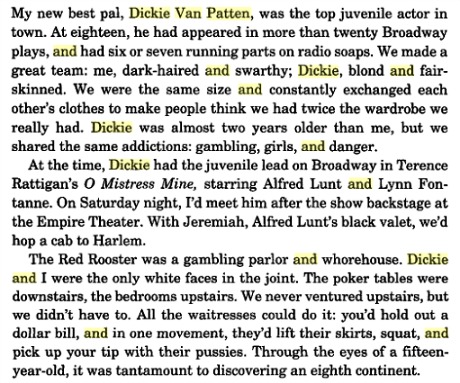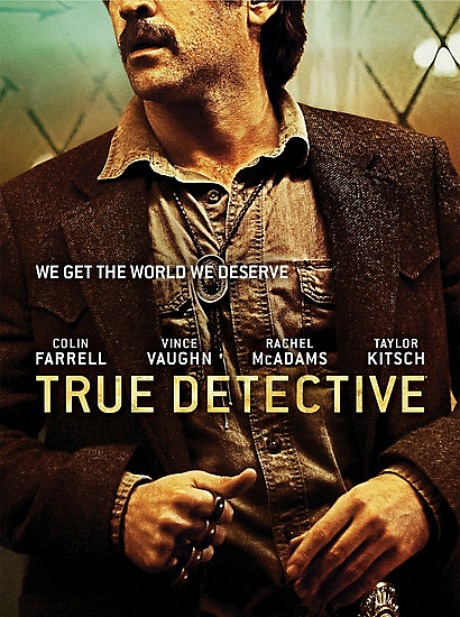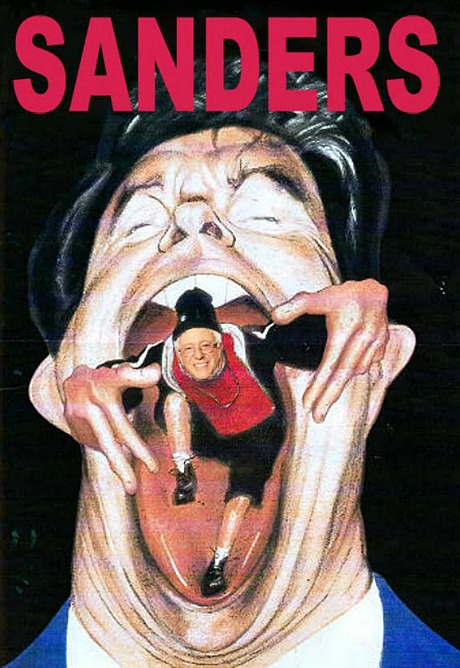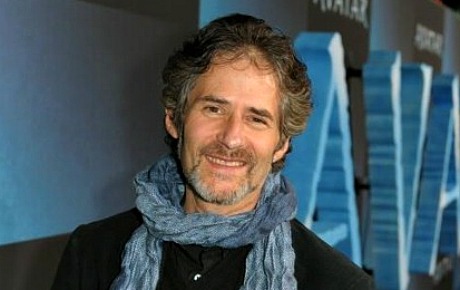It’s the same broad joke over and over, no? For one brief shining moment Zach Galifianakis was cool in Birdman. Now he’s back to playing diaper men.
 Jeffrey Wells
Jeffrey Wells
“Leave Me Alone, I’m A Family Man…”
The following anecdote was written by legendary producer Robert Evans, and can be found in his 1994 autobiography “The Kid Stays In The Picture“:

Thanks to HE reader Tim Jackson for providing the excerpt.
Who Cares?
A 1969 Harley Davidson motorcycle bought and presumably ridden around by Marlon Brando is being auctioned on Saturday, 6.27 at Julien’s Auctions in Beverly Hills. The bike is expected to sell for at least $200K. Can I ask why? The Brando machine to bid on is the one he rode in The Wild One (’54), which was a black 1950 Triumph Thunderbird. (Triumph quickly exploited this by introducing a line of black T-Birds, nicknamed the Triumph Blackbirds.) Or, failing this, how about auctioning the red Moto Guzi motorcycle that Brando posed with to promote The Wild One? You’d have be pretty gullible to put any value on the ’69 Harley…seriously.

Action In The South Pacific
“It was during the campaign on Guam during the summer of ’44. Seven of us were about to do a job on a cave in which some Japs were reputedly hiding. We fanned into formation and worked out way to vantage points around the entrance. Then I signaled, and one of the flame throwers sprang up and shot a full load of liquid fire into the cave. He darted back and two men perched near the top of the cave leaned over and hurled in grenades. Two more Marines ran forward to spray the inside of the cave with .30-calibre bullets from Browning automatic rifles. And then the coup de grace as a demolitions man lighted the fuse of two blocks of TNT and flung them into the darkness.

“The job was over. Any sons of Nippon who might have been inside were certainly having tea with their ancestors. We relaxed and were lighting cigarettes when one of the guys suddenly pointed and cried “look!”
Whoa…
Last night I caught episode #2 of the second season of True Detective. Things started to get a little bit heavier, darker, weavier. I was hanging in there, feeling a little bit sorry for Vince Vaughn‘s Frank Semyon (who doesn’t seem like that much of a “bad guy” — he’s just into run-of-the-mill graft and corruption) and noticing that Rachel McAdams‘ Ani Bezzerides of the Ventura County Sheirff’s office and even Colin Farrell‘s Detective Ray Velcoro — a snorting alcoholic slob and bellowing animal in episode #1 — are starting to seem a little less obsessive and even a bit more personable. So things are rolling along, seeds are being planted, steam is starting to push the engine along a little faster and then…I’m not spilling or even hinting but something happens, man. A thing I wasn’t expecting at all. In the aftermath I said to myself, “Okay, now things have kicked into gear.”

As Close To Bulworth As We’re Ever Going To Get
In yesterday’s riff about Bernie Sanders, I suggested that the independent Senator from Vermont “is running a Jay Bulworth-type campaign…a guy who doesn’t care, speaking sometimes uncomfortable blunt truths and nothing but, a guy with nothing to lose and because of that he strikes a chord.” Sanders to Bill Maher last Friday night: “What the campaign is about is a very radical idea — we’re going to tell the truth.” When you look closely at the parallels between Sanders and Warren Beatty‘s philosophically reborn U.S. Senator, there actually aren’t that many. But at least there’s this: Bulworth didn’t give a damn back then and neither does Bernie right now. The latter is about bluntness and clarity and speaking truth to corporate power in a realm that has always been rank with smoke and obfuscation. Sen. Sanders’ speeches are quite conservative in terms of delivery and his phrasings are clipped and precise and bang on the money. But what he’s doing right now is about as close to what Beatty was doing in Bulworth in that obviously prophetic 1998 film…let’s try again. What Sanders is doing is as close to a Bulworth scenario as we’re ever likely to see in a real-deal political campaign.

Thanks to HE’s own Mark Frenden for whipping the poster art together in record time.
Cheerful, Well-Liked, Spreader of Myths
The likably bland Dick Van Patten, who was the kind of easygoing actor that 20th Century sitcoms were made for and vice versa, has passed at age 86. Due respect. In this interview clip Van Patten says that his Eight Is Enough character, Tom Bradford, is “very much like me” in that “his family comes first and his career second.” What does that mean exactly? Could this be a Dick Van Patten bromide? If you’re lucky enough to have found a job or a calling that you really love, you’ll never “leave the office” at 5:30 pm so you can head straight home to your wife and kids. The only people who quit work at 5:30 pm are (a) Clint Eastwood and (b) people who aren’t really in love with their jobs. If you love what you do you’ll almost always stay a little bit later, and that’s basically a good thing all around — good for your income, good for your disposition, good for the family because you’re happy, an inspiration to your kids, etc. And if your wife or kids are any kind of perceptive they’ll understand this is a blessing. Because many (most?) people hate their jobs, and nine…okay, eight times out of ten job-haters tend to find solace in a bottle. Or in an affair with a co-worker. Which isn’t to say job lovers don’t have affairs also — life is never that simple. Sidenote: I’ve never watched a single episode of Eight Is Enough — not once, not ever.
Beautiful James Horner Is Gone
The Daily Mail‘s Chris Spargo and the Associated Press are reporting that the brilliant, profoundly gifted film-score composer James Horner (Titanic, Field of Dreams, Avatar, A Beautiful Mind, Apollo 13, Glory, The Rocketeer, The New World, Braveheart) apparently died this morning when his private plane crashed into the Los Padres forest in Ventura County. Update: Variety is reporting that Horner’s death is confirmed.

Composer James Horner, killed in a small-plane crash that happened around 9:30 am this morning.
“A single-engine plane registered to Oscar-winning composer James Horner has crashed in Southern California,” the story says, “and while the identity of the [pilot] who died has not been released it is believed to be the famed musician.
“Jay Cooper, an attorney for Horner, said the plane was one of several owned by the 61-year-old composer. He said no one has heard from Horner and that ‘if he wasn’t in it, he would have called.'”
I felt I’d come to know Horner pretty well through his music over the years. Emotionally, I mean. The river within. His score for Phil Alden Robinson‘s Field of Dreams (’88) was the first Horner that really got me. I wrote last year that I think Horner’s score for Ron Howard‘s A Beautiful Mind was a significant reason why that film won the Best Picture Oscar. His scores for James Cameron‘s Avatar, Titanic and Aliens are legendary. The man was a maestro, a genius, a musical seer, one of the all-time greats.
Bowers & Wilkins Headphones: Expensive, Infuriating
I bought a pair of Bowers & Wilkins P3 headphones in Manhattan in early May, just before flying to Paris and the Cannes Film Festival. During the latter part of the festival the slim cord that extends from the phones to the playing device (iPhone, iPad) separated in two, and the part with the male jack was lost. I naturally had to order a replacement cord, which set me back $25 or $30 with shipping. And then another part broke off. During the 6.13 memorial luncheon for my mom in Connecticut I noticed that one of the earpads had fallen off. I’ve just ordered a replacement for that, which set me back another $25 or so. Where did I get the idea that when you buy expensive headphones that they’ll be sturdy and won’t break? Who makes a cord that comes in two sections? Who designs ear pads that fall off? In my book the Bowers & Wilkins headphone designers are dilletantes.

